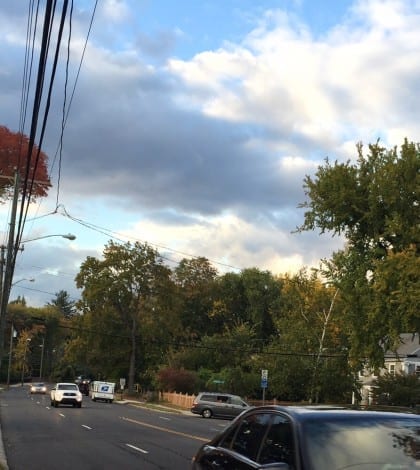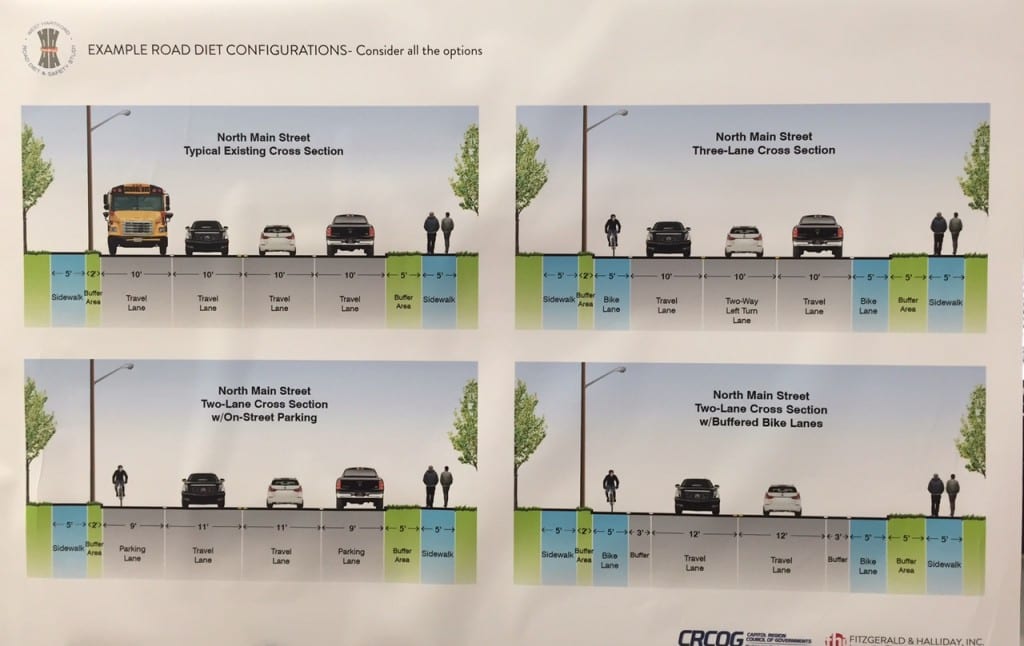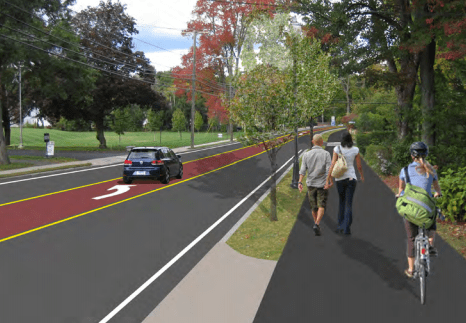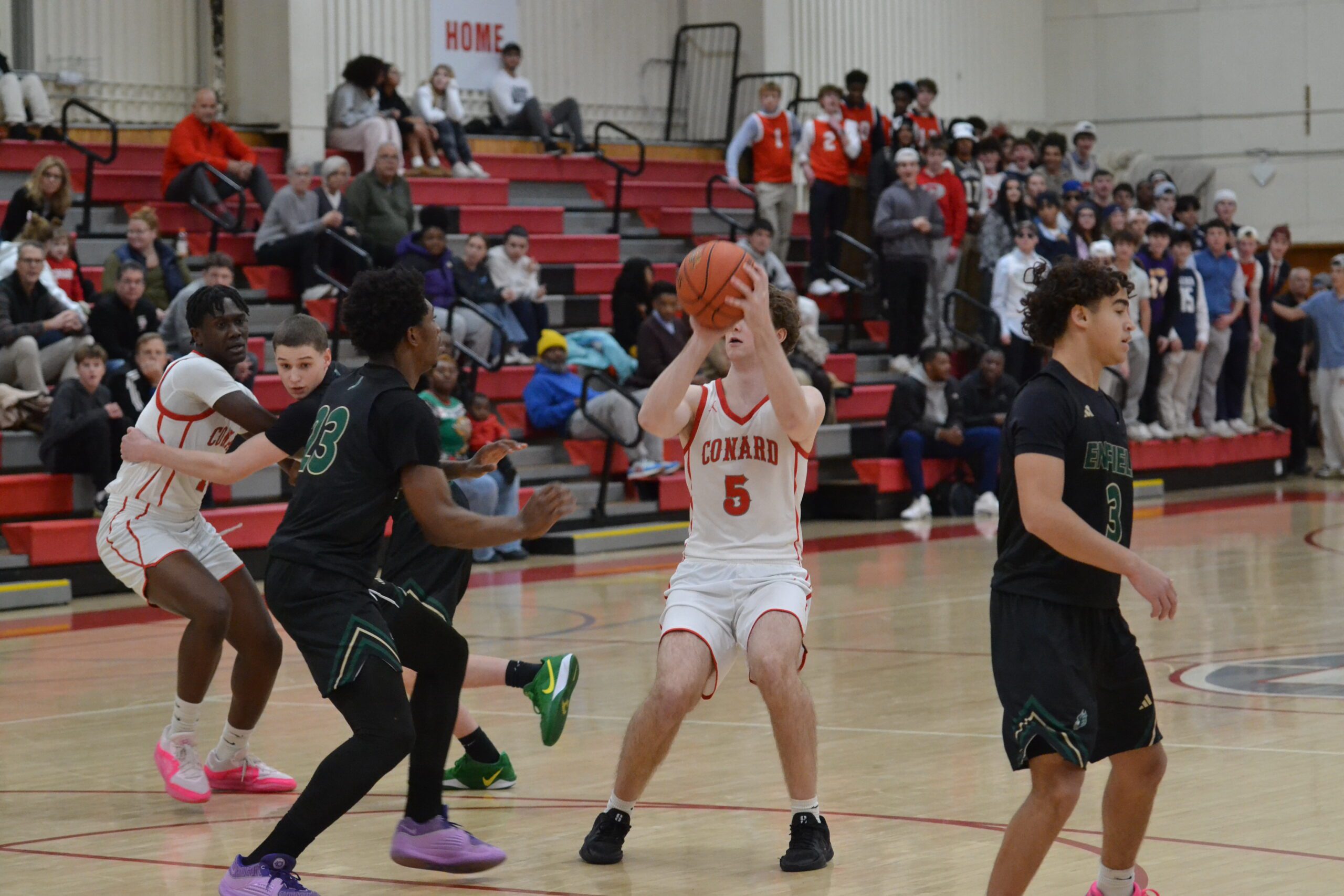West Hartford to Continue Evaluation of North Main Street Improvement Opportunities

Audio By Carbonatix

CRCOG held public information sessions as part of determining the feasibility of a road diet for North Main Street. Photo credit: Ronni Newton (we-ha.com file photo)
West Hartford will consider safety improvements and a proposal for the next step should be forthcoming in February.
By Abigail Albair, West Hartford Press Executive Editor
Editor’s Note: This article appears courtesy of a partnership with The West Hartford Press, a product of TurleyCT Community Publications. To request a free copy of the town’s weekly newspaper, visit turleyct.com.
Town staff will present a proposal to a committee of the Town Council next month regarding steps to continue evaluating North Main Street and opportunities for improvements.
During the Jan. 24 meeting of the Community Planning and Physical Services committee, West Hartford Director of Community Services Mark McGovern explained that Town Manager Matt Hart, who was absent from the meeting due to personal reasons, is “very interested in moving forward on a continuation of an evaluation of the street.”
A study was conducted in 2015 on the main North to South thoroughfare and a potential “road diet.”
It was led by the Capitol Region Council of Governments (CRCOG), with firm Fitzgerald & Halliday leading the design process, and resulted in three potential road diet plans.
Funding for the study was secured due to the work of cyclist and cycling activist state Sen. Beth Bye – in an effort to find the best way to move traffic and pedestrians safely from Bishops Corner to West Hartford Center.
“We have always been a community that’s different and looking forward,” Bye said at the time, adding that the study was meant to look at “if it’s possible to make Main Street a little slower, a little safer and as an economic connector between Bishops Corner and the Center.”
North Main Street currently includes four 10-foot lanes. The biggest challenges with four-lane roads are that vehicles that depart from side streets or driveways must watch three lanes of traffic and that cars turning into side streets have to cross two lanes of traffic, Mike Morehouse of Fitzgerald & Halliday said during a 2015 community presentation, adding that a “lane imbalance” exists, as most vehicles favor the outside lane so inside lanes act as left turning lanes to begin with.

Examples of road diet configuration on display at CRCOG information session. Photo credit: Ronni Newton (we-ha.com file photo)
A typical road diet on North Main would reduce the number of lanes to three 10-foot lanes, with one travel lane in each direction and a two way left turn lane in the center. A five-foot shoulder would be left on either side of the road. This option, which would cost approximately $75,000, would result in fewer crashes, less congestion, lower speeds, shorter crossings, better visibility, space for bikes, and a buffer for pedestrians, Morehouse said, though it would increase travel time on the road and would still not be ideal for less experienced cyclists.
The second option suggested was a road diet with a side path. This would include the three 10-foot lanes with two travel lanes and a turning lane, but two-foot shoulders and a 10-foot side path on the east side of the road for pedestrians and cyclists, something that would separate walkers and bikers from the traffic and be safer for less experienced cyclists. It would be much more costly to construct, totaling approximately $1,550,000, Morehouse said at the time.

Rendering of “Concept 2,” the most costly of the road diet options for North Main Street in West Hartford. (we-ha.com file photo)
The third road diet option shared was for a roundabout at the ASD driveway, which Morehouse said is located on “one of the fastest stretches of road in the whole corridor.” It would carry a cost of $800,000 to $1 million.
During the committee meeting this week, Town Engineer Duane Martin said his concern with the study was that the attention of it was focused on North Main Street, but it did not look at the impact of traffic diversion.
That was due to the fact that the CRCOG grant was for a fixed amount given before a scope of the project was established, so funds did not exist to examine certain areas.
“As an extension of the study, one of the things I would like to have addressed is looking at Trout Brook Drive and possibly Mountain Road and the connecting roads between those” to determine the traffic impact, Martin said.
The study also didn’t result in a concept plan, he said, which would be required to give to a contractor who would actually make any modifications.
A few residents came to Wednesday’s committee meeting to express their safety concerns with North Main Street and urge the town to move ahead quickly with modifications to the road.
“In terms of diversion to Trout Brook, I think it’s fair to say there will be significant diversion, but it’s a wider road designed to handle more [traffic],” said North Main Street resident Matt Warshauer. “What this is really about for us is a public safety issue. It’s a very dangerous street with a high rate of accidents.”
The town had intended to use the project to reconstruct the North Main Street bridge and the necessary lane reduction in order to complete the work as a way to evaluate the potential impacts of a road diet.
Unfortunately, Gov. Dannel Malloy and the State Department of Transportation recently announced the indefinite postponement of hundreds of transportation projects statewide. Two local projects, including the bridge reconstruction estimated to cost about $1.6 million, were among the projects on the list.
Martin said the town has no answer right now as to how long the delay will be, so it will move ahead and look for other ways to examine North Main Street and potential traffic impacts of any change.
“It feels to me like we’re sort of saying we’ll just kick the can down the road a little bit,” said Wyndwood Road resident Leo Harrington.
“This was a dangerous road for me when my kids were here and now when my grandchildren are here. I would urge the town to look at trying this out because I think that’s the only way to begin is to look at traffic calming.”
“I would just mention that since this is now out there and it’s been out there for a while, the next time someone gets injured or killed or suffers damage to their vehicle, I could see someone saying, ‘What was done?’ ‘What did the town do in the intervening period?’” he said.
Warshauer agreed and asked the town to, instead of spending money on continued study, to spend funds to restripe the road and reduce travel lanes and just see what traffic impact results.
McGovern said staff is working to develop a potential plan to move forward evaluating the road and potential changes and would bring its proposal to the committee at its Feb. 21 meeting.
“The bridge [project] was a catalyst [for further study] and now that is on hold, but we are still moving forward,” Mayor Shari Cantor assured the residents.
She noted that the town’s police and fire departments had concerns with a road diet and its potential impact on travel of emergency vehicles down the thoroughfare, so that and other concerns will need to be examined.
“When there is any safety issue, we may fix some problems, but we don’t want to make things worse,” she said, explaining that all outcomes both positive and negative of any changes must be considered.
Like what you see here? Click here to subscribe to We-Ha’s newsletter so you’ll always be in the know about what’s happening in West Hartford!




[…] Community Planning and Physical Services Committee discussed plans to study the road diet in January, at a time when the state had frozen the funds that were expected to be used for the bridge work. […]